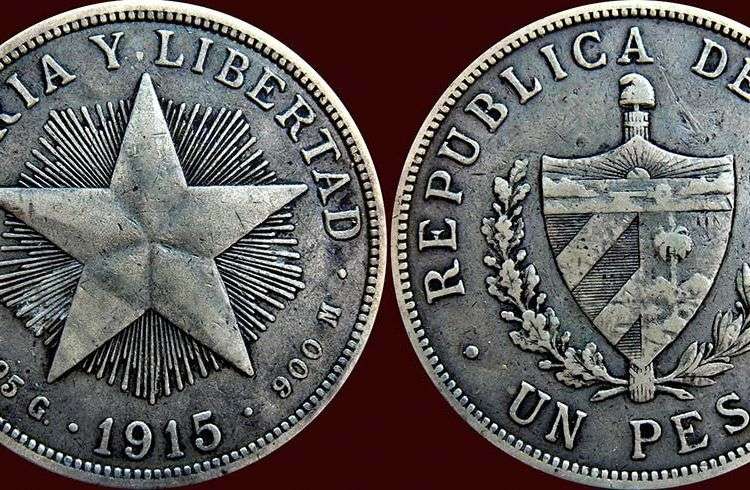The Cuban peso was “born” legally on November 7, 1914, with the publication in the Official Gazette a law signed on October 29 of that year by President Mario García Menocal. The National Monetary System was created then in a twelve years old republic
The premiere of the coins with the Coat-of-arms of the Royal Palm was in 1915. Minted in Philadelphia, USA, the first pieces designed by the American engraver Charles Edward Baber ended up in the hands of Menocal. This collection is exposed in the Numismatic Museum of Havana and is named after its first owner.
The pesos (and cents) then there are very similar to those used today, although they were not used as means of payment. “That coin, the minute it started circulated, became a means of hoarding” explained to OnCuba Oscar Zanetti, Doctor of Historical Sciences specializing in economic issues. “To the practical effects, except the coins (pennies), what circulated in Cuba was the dollar.”
Issued on precious metals, the Cuban peso was kept in banks or in homes, while the greenback remained in and out of pockets.
The emergence of national monetary standard was a national aspiration of the early twentieth century, although the Cuban historian Alejandro Garcia Alvarez calls it a measure of character “rather economic and of dubious benefits to the country because of its limitations.”
The Cuban currency was only a sign in limited quantities adds Garcia Alvarez. “The lack of a bank of issue made it impossible for the State would be able to provide assurance of continuity, support and independent living to its currency.”
The Cuban citizen a hundred years continued to pay their bills, collecting their wages and “living life” in US dollars, which was the de facto currency in the country since the 1899 US military intervention.
The same 1914 law that gave birth to the Cuban peso allowed free movement of the greenback and established an exchange rate: a conversion of a dollar for a peso, it remains in effect throughout most of the Cuban business and government sector.
Ten years later, in 1924, 86 percent of the money stock of the country was composed of dollars of paper money, wrote the Cuban historian Gregorio Collazo Perez in a text on the subject. There were no Cuban notebanks until 1934, when it issued the so-called silver certificates. By 1948, the National Bank of Cuba was created as issuer of the national currency.
The Cuban peso is a hundred years in a moment of vindication. Starting the so-called Zero Day, it will be the only unit of account, means of payment and store of value issued in Cuba.










